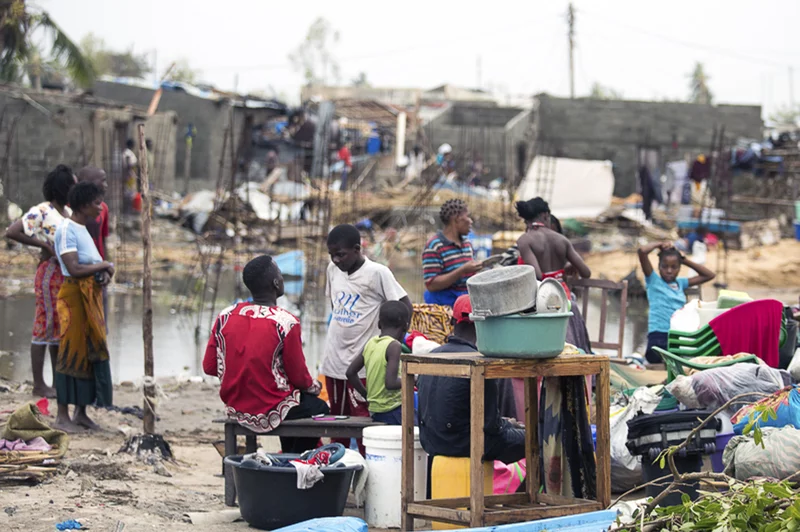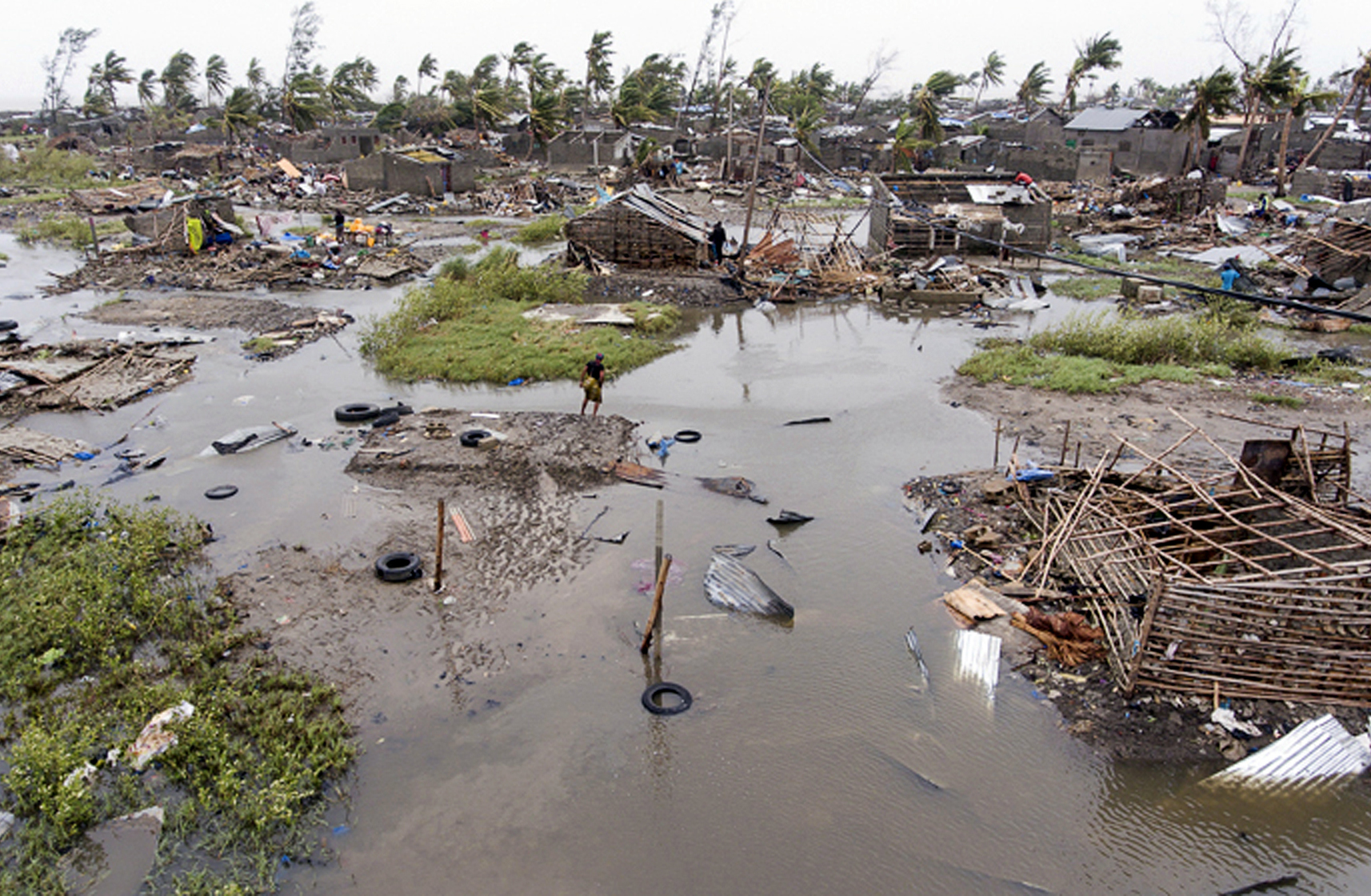Mozambique has endured three cyclones in just three months, leaving thousands struggling to rebuild and raising fears that increasingly frequent storms may become the new norm.
The series of cyclones—Chido, Dikeledi, and Jude—has devastated one of the world’s poorest regions, displacing thousands and stretching the resources of humanitarian groups. The storms have also drawn concern from experts, who warn that extreme weather events in the area are becoming more common.
Mozambique’s cyclone season typically runs from November to April, but this year has been particularly intense.
Cyclone Chido struck in mid-December, killing at least 120 people as it tore through the French territory of Mayotte before hitting Mozambique. In January, Cyclone Dikeledi made landfall, claiming at least five lives.
Last week, Cyclone Jude brought winds of up to 195 km/h (120 mph), leaving a trail of destruction in its wake. Authorities reported that it killed at least 16 people in Mozambique and destroyed more than 40,000 homes. The UN estimates that Jude affected around 420,000 people across Madagascar, Malawi, and Mozambique.

Jude and Dikeledi made landfall in nearly the same location—Nampula province, about 1,400 km (870 miles) north of the capital, Maputo—while Chido struck just 200 km further north.
Humanitarian workers warn that the repeated disasters are overwhelming communities already struggling to recover from previous storms.
Mozambique’s most vulnerable populations, especially those in remote areas, are ill-equipped to withstand repeated climate shocks. Guy Taylor, a spokesperson for UNICEF in Mozambique, noted that by the time Cyclone Jude arrived, “all river basins and dams in Nampula province were already almost full,” compounding the disaster. The relentless storms are also depleting emergency supplies.
Mozambique has suffered devastating storms in the past, including Cyclone Idai in 2019, which killed more than 600 people. However, meteorologists are now observing a clear increase in the frequency of cyclones in the region.
Previously, the country experienced six to seven tropical storms per decade. However, in just the last six seasons, there have already been 10.
Langlade suggests that rising ocean temperatures in the Mozambique Channel may be playing a role. Warmer waters provide the energy that fuels cyclones, potentially making them stronger and more frequent.
Across the southwestern Indian Ocean, eight of the 11 recorded tropical storms this season have reached full cyclone intensity. “This ratio is above normal,” Langlade noted. “Typically, it is 50 percent, but so far it has exceeded 70 percent.”
While it remains uncertain whether this increase is a long-term natural fluctuation or a direct result of climate change, the impact is undeniable.
Experts agree that Mozambique must invest in disaster preparedness and infrastructure to withstand future storms.
Taylor pointed to UNICEF’s efforts to build more than 1,000 cyclone-resistant classrooms across the country as an example of how adaptation can save lives. “It really makes the case for investing in resilience,” he said. “Because if you don’t, it’s almost like not having infrastructure at all—since it just gets knocked down time and time again.”
With the cyclone season still ongoing, Mozambique faces an uncertain future, and aid organisations are bracing for the possibility of yet another storm.


 Trending
Trending 